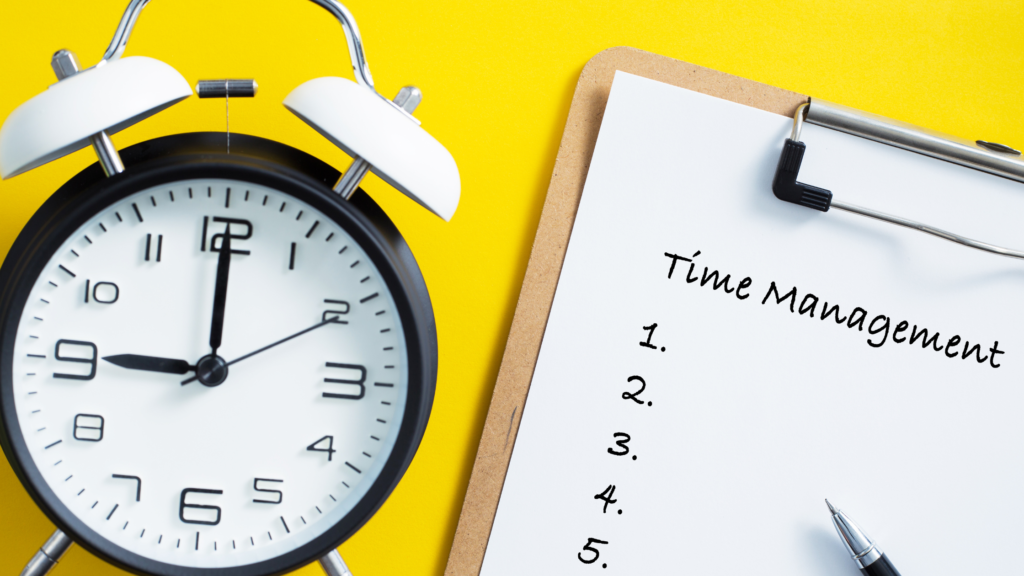By Ofuns Okwechime
In the hustle of modern life, mastering the art of time management especially as a young adult living independently is not just a skill but a beacon guiding us through the chaos.
This guide is a roadmap to navigate the vast landscape of skills, techniques and tools for effective time management.
Picture this as a friendly conversation, where we dive into the depths of wisdom, tailored for the dynamic world young adults navigate. It’s not just about ticking off tasks; it’s about orchestrating a symphony of time, where each note contributes to the grand melody of your life.
From knowing where your minutes wander to, we’ll journey through practical goal setting, sprinkled with a dash of adaptability and a pinch of mindfulness. So, let’s embark on this expedition together, unravelling the secrets of effective time management with enthusiasm, curiosity, and the promise of unlocking your full potential.
Know How You’re Spending Your Time
Understanding where your time goes is the first step to effective time management. Keep a simple log or use apps to track activities. Identify time sinks and areas for improvement.
Reflect on your daily logs to refine your approach and make informed adjustments. Regularly reassess your goals and priorities to ensure they align with your evolving values and aspirations.
Stick to a Daily Schedule
Create a daily routine and stick to it. This provides structure and helps avoid wasting time on indecision. Consistency builds habits, making tasks more automatic.
Regularly assess and tweak your schedule to accommodate changes and optimise productivity. Embrace the adaptability of your routine, allowing for spontaneity while maintaining a foundation for success.

Goal Setting
Define clear, achievable goals. Break them into smaller, manageable steps. This clarifies what is needed and provides motivation and a sense of accomplishment.
Regularly revisit and revise your goals to align with your evolving priorities and aspirations. Celebrate small victories along the way to stay motivated and focused on your long-term objectives.
Prioritise
Not all tasks are equal. Identify and focus on high-priority items first. This ensures that important tasks don’t get overshadowed by less critical ones.
Develop a system for categorising tasks based on urgency and importance, ensuring a strategic approach to your daily workload. Regularly reassess your priorities to adapt to changing circumstances and maintain a proactive stance.

Dwight D. Eisenhower’s Time Management Matrix, also known as the Eisenhower Box, is a powerful tool for prioritising tasks based on urgency and importance. The matrix divides tasks into four quadrants, guiding you on where to focus your time and energy. Here’s an explanation of each quadrant with examples:
Urgent and Important (Quadrant I):
- These are tasks that demand immediate attention and have a significant impact on your life or work.
- Examples: Emergencies, pressing deadlines, health crises, or critical work issues.
- Action: Handle these tasks promptly to prevent negative consequences.
Important, but Not Urgent (Quadrant II):
- These tasks are significant for long-term goals, personal development, and strategic planning.
- Examples: Planning, relationship building, skill development, and long-term goal setting.
- Action: Schedule dedicated time for these tasks, as they contribute to your overall success and well-being.
Urgent, but Not Important (Quadrant III):
- These tasks may seem urgent, but they don’t contribute much to your long-term goals or well-being.
- Examples: Interruptions, some phone calls, meetings that don’t require immediate attention.
- Action: Minimise or delegate these tasks to free up time for Quadrant II activities.
Not Urgent and Not Important (Quadrant IV):
- These tasks are neither urgent nor important and often represent distractions or time-wasters.
- Examples: Excessive social media, mindless browsing, unnecessary meetings, trivial activities.
- Action: Avoid spending too much time on these tasks; they can hinder productivity and goal achievement.
How to Use the Eisenhower Box:
- Identify Tasks: List all your tasks.
- Categories: Place each task into the appropriate quadrant.
- Prioritise: Focus on Quadrant I and II tasks first, as they contribute the most to your long-term success.
- Delegate or Eliminate: Consider delegating Quadrant III tasks or finding ways to minimize them. Eliminate or limit time spent on Quadrant IV tasks.
By regularly using the Eisenhower Box, you can enhance your decision-making and time-management skills, ensuring that your efforts align with your priorities and contribute to your overall success.
Tackle the Most Difficult Task First
Following Brian Tracy’s advice in “Eat That Frog,” face the toughest task early in the day. This not only boosts productivity but also alleviates the stress of procrastination.
Continuously challenge yourself by tackling increasingly complex tasks to enhance your problem-solving skills and confidence. Reflect on your accomplishments to build resilience and maintain a positive mindset.
Batch-Process Similar Tasks
Group similar tasks together. This minimises mental switching, enhancing efficiency. Handle emails, calls, or errands in dedicated time blocks.
Experiment with different task combinations to find an effective batching strategy for your workflow. Regularly reassess your batching approach to accommodate changes in task volume and complexity.
Set Reasonable Time Limits
Allocate specific time slots for tasks. This prevents them from expanding endlessly. Be realistic about how much time each task requires.
Regularly evaluate your time estimates to enhance your understanding of task duration and refine your scheduling accuracy. Reflect on your time limits to ensure they align with the complexity of the task and adjust as needed to maintain a balance between efficiency and quality.
Learn When to Say No
Committing to too many tasks leads to stress and poor time management. Learn to decline tasks that don’t align with your priorities or capacity.
Establish clear boundaries and communicate them assertively to maintain a healthy work-life balance. Regularly reassess your commitments to ensure they align with your long-term goals and personal well-being.
Avoid Multitasking
Contrary to popular belief, multitasking hampers efficiency. Focus on one task at a time to ensure quality and quicker completion. Develop mindfulness techniques to bring your attention back to the current task, enhancing your ability to resist the allure of multitasking. R
Keep Organised
A clutter-free environment reduces mental stress. Organise your workspace and digital files to quickly locate what you need.
Regularly declutter and reassess your organisational system to adapt to changing needs and prevent information overload. Embrace a minimalist mindset, continually evaluating the necessity of items and information in your space.
Use Time Management Tools
Leverage apps, calendars, and planners to organise tasks and deadlines. Set reminders to stay on track and avoid forgetting important commitments.
Explore new tools and technologies to stay current with the latest time management innovations and continuously improve your workflow. Regularly review and update your toolset to ensure it aligns with your evolving needs and preferences.
Create a Daily Planner
A daily planner outlines your schedule, providing a visual guide to manage your time effectively. Include breaks and buffer time for unexpected delays.
Regularly review and adjust your planner to accommodate shifting priorities and optimise your daily routine. Experiment with different planner formats to find the one that best suits your organisation’s style and enhances your productivity.
Divide Large Tasks into Small Tasks:
Breaking down big tasks into smaller, more manageable steps makes them less overwhelming. This also allows for a more focused approach.
Experiment with different ways of breaking down tasks to find the method that works best for your cognitive style and workflow. Regularly reassess your task breakdowns to ensure they remain relevant and effective in the context of your overall goals.
Give Each Task a Time Limit
Allocate specific time durations to tasks. This instils a sense of urgency and prevents excessive time spent on any one activity.
Reflect on your time limits to ensure they align with the complexity of the task and adjust as needed to maintain a balance between efficiency and quality. Regularly assess your time limits to refine your understanding of your working pace and optimise your scheduling.
Block Out Distractions
Identify and eliminate sources of distraction. Turn off notifications, close unnecessary tabs, and communicate your need for focused time to those around you.
Regularly reassess your work environment and habits to identify and address new sources of distraction that may arise. Embrace occasional breaks to refresh your mind, focus and relax.

Establish Routine
Consistent routines create a rhythm that makes it easier to transition between tasks. This predictability enhances efficiency and time management.
Embrace flexibility within your routine to accommodate unexpected events while maintaining the core structure that supports your productivity. Regularly evaluate your routine to ensure it aligns with your current needs and goals, making adjustments as necessary.
Don’t Procrastinate
Procrastination steals valuable time. Overcome this habit by breaking tasks into smaller steps and starting with the easiest.
Develop strategies for overcoming procrastination, such as setting short deadlines for yourself and breaking large projects into smaller, more manageable milestones. Regularly reflect on the reasons behind procrastination and implement proactive measures to address underlying issues.
Learn How to Manage Distractions
Recognise distractions and develop strategies to manage them. This might involve creating a designated workspace or using noise-cancelling headphones. Regularly assess and refine your distraction management techniques to stay adaptable and effective in different environments.
Time Blocking
Allocate specific blocks of time for different activities. This dedicated focus enhances productivity and ensures all tasks receive attention. Experiment with time-blocking techniques, such as the Pomodoro method, to find the approach that maximises your concentration and productivity.
Regularly review and adjust your time blocks to accommodate changes in your priorities and workload. Embrace the flexibility of time blocking, allowing for spontaneity while maintaining a structured approach to your tasks.
In Conclusion
Managing time effectively is an ongoing process. It’s about finding what works for you, experimenting with different techniques, and staying flexible.
Life is dynamic, and so should be your approach to time. Celebrate the victories, learn from the challenges, and keep refining your time management skills.
With every tick of the clock, you’re getting closer to unlocking your full potential. So, carry the lessons, embrace the rhythms of your days, and continue crafting the symphony of your life.
Here’s to a future filled with organised chaos, intentional moments, and the satisfaction of a day well spent! Cheers to making the most of your time!

